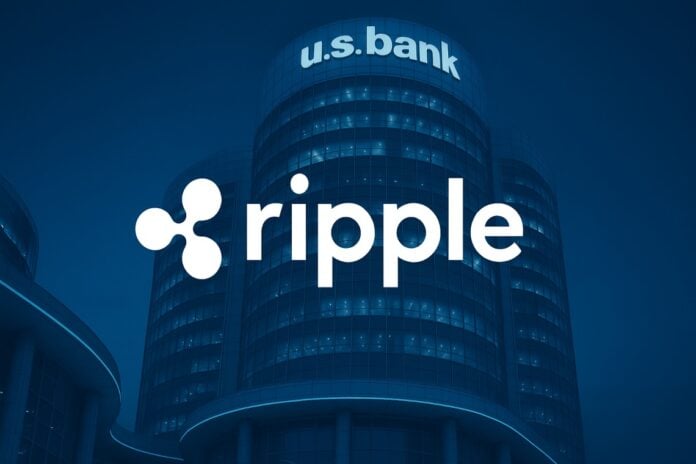Ripple has applied for a federal banking license, a move aimed at redefining the regulation of RLUSD and, more generally, the landscape of digital assets in the United States.
Summary
Stablecoin and regulation: Ripple seeks the national banking license
Ripple has submitted an application for a national banking license with the U.S. Office of the Comptroller of the Currency (OCC), thus initiating a path that could lead RLUSD to become the most regulated stablecoin on the market. The purpose of this initiative is to place RLUSD, Ripple’s dollar-backed token, under federal supervision and expand the offering of crypto financial services within the traditional banking system of the United States.
The request, formalized on Wednesday, fits into a context of increasing regulatory attention on stablecoin. If approved, it would bring Ripple under dual supervision: at the state level through the New York Department of Financial Services (NYDFS) and at the federal level through the OCC. Ripple’s goal is clear: to build trust and transparency, thus responding to growing demands for security in the digital asset sector.
RLUSD: characteristics of Ripple’s stablecoin and position in the market
RLUSD, the stablecoin pegged to the US dollar, was launched in December 2024 and currently has a market capitalization of approximately 470 million dollars. Although it is significantly smaller compared to market leaders like Tether and Circle’s USDC, RLUSD has already positioned itself among the most adopted stablecoins in the United States.
The distinctive feature of RLUSD is transparency: the application for a national banking license aims to ensure maximum regulatory oversight, offering investors and financial institutions an asset regulated at both the state and federal levels. This would represent a “unique benchmark” for trust in the stablecoin segment, as emphasized by Ripple’s CEO, Brad Garlinghouse.
Fedele alle nostre radici di conformità di lunga data, @Ripple sta facendo domanda per una carta bancaria nazionale dall’OCC. Se approvata, avremmo sia la supervisione statale (tramite NYDFS) che federale, un nuovo (e unico!) punto di riferimento per la fiducia nel mercato delle stablecoin.
— Brad Garlinghouse (@bgarlinghouse) 2 luglio 2025
All’inizio della settimana tramite… https://t.co/IdiR7x3eWZ
Why Ripple is pursuing the federal banking license
Obtaining a national banking license offers multiple strategic advantages to Ripple. First of all, it would allow the company to streamline payment settlement processes, eliminating the need for intermediary banks. As a result, transaction times and costs would be optimized, increasing the efficiency of RLUSD as a means of payment and digital vehicle.
Secondly, Ripple aims to provide additional crypto financial services within a regulatory framework historically reserved for traditional credit institutions. With the OCC license, Ripple could offer not only stablecoins but also custody of digital assets and innovative financial products, expanding the range of solutions available for institutional and private clients.
Direct access to the Federal Reserve: the request for the master account
Another crucial step in Ripple’s strategy is the request for a master account at the Federal Reserve. Such authorization would allow the company to directly access the Fed’s payment systems and deposit reserves to guarantee RLUSD at the central bank.
In this way, Ripple can ensure full dollar coverage of RLUSD, complying with emerging provisions and industry best practices, increasing the level of security and reliability perceived by investors.
The competition with Circle and the new regulatory dynamics
The initiative by Ripple is part of a broader race for institutional recognition of stablecoins. A few days before Ripple’s presentation, Circle Internet Group, issuer of USDC, also applied for a national banking license, with the goal of launching the First National Digital Currency Bank, a federal company dedicated to the custody and management of digital assets.
Circle had already taken a significant step forward by going public, with a valuation of nearly 18 billion dollars. The entry of important players into the framework of banking regulation shows how the adoption of clear and supervised rules is the key to the full integration of stablecoins into the traditional financial system.
The regulatory framework: the GENIUS Act and political support
The push by crypto companies to regulate themselves is also reflected in the ongoing legislative work in Washington. At the beginning of June, the Senate approved the GENIUS Act, a regulation that requires stablecoin issuers to have reserves in dollars and to publish monthly transparency reports.
The measure, which still needs to be voted on by the House and has the support of President Trump, represents a turning point. According to Grayscale, this law could mark a decisive step towards the integration of stablecoins into the mainstream economy, offering protection tools for both consumers and the stability of the financial system.
Ripple and the future of regulated stablecoins in the United States
The outcome of the federal banking license application by Ripple is not yet defined. However, the attempt to obtain regulation strongly anchored to banking laws represents a watershed for the entire sector.
RLUSD, integrated into a reality supervised both at the state and federal level, could become the most regulated stablecoin in the United States. This scenario would facilitate not only greater adoption and market growth, but would also offer crypto companies new tools for legitimization and longevity in the complex American financial system.
A sector in transformation: prospects and future opportunities
The strategy adopted by Ripple with RLUSD indicates a decisive transition: stablecoins are no longer instruments outside the system, but are carving out a place within the more regulated financial circuits. The simultaneous movement of players like Circle and legislative attention are changing the parameters of trust and transparency.
For investors, companies, and consumers, this climate opens up new possibilities: greater protection, innovation in payments, and increasingly transparent access to digital assets. Monitoring the trend of license requests and regulatory evolution will be crucial to seizing the advantages of integrating stablecoins like RLUSD into the bull and bear economy.


